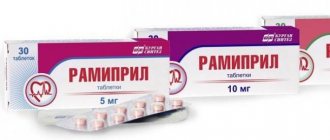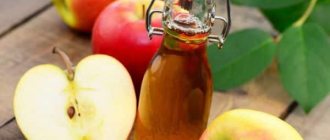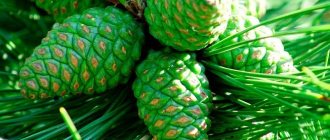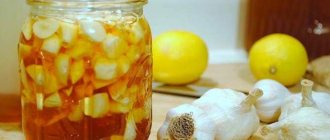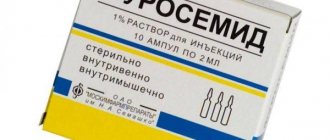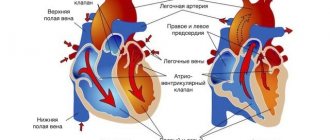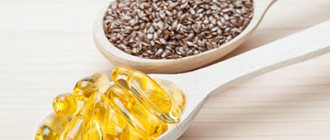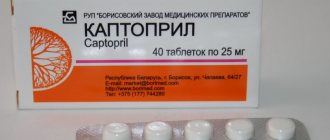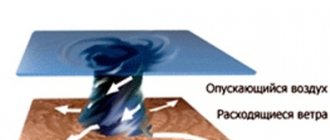Arterial hypertension is an extremely common pathology that affects more than 50% of men and women over 40 years of age. This disease is the leading cause of cardiovascular complications (myocardial infarction, stroke, coronary heart disease, chronic heart failure, chronic kidney disease) and causes 55% of total mortality.
There are herbal remedies to lower blood pressure. Many plants, due to targeted or complex effects on the body, help not only reduce blood pressure, but also normalize other disorders, in particular:
- improvement of lipid profile;
- reducing the severity of atherosclerotic lesions of large vessels;
- increasing glucose utilization;
- normalization of microcirculation and increased oxygenation of distant organs and tissues.
Who is at risk?
Hypertension is associated with many pathologies, external influences and internal changes in the body. It most often occurs in people with the following risk factors:
- Age over 65 years.
- Overweight or obesity.
- Low physical activity, sedentary lifestyle.
- Excessive consumption of alcoholic beverages, smoking.
- Abuse of coffee.
- High emotional stress, chronic stress and sleep disturbances.
- Failure to comply with work and rest schedules.
- Hereditary tendency to high blood pressure.
- Unbalanced diet, lack of fruits and vegetables in the diet, excessive consumption of table salt.
- Fluctuations in hormonal levels during pregnancy, taking hormonal contraceptives, early transition to menopause.
- Endocrine diseases: diabetes mellitus, hyperthyroidism, etc.
Features of normalization of indicators
How to get rid of attacks of hypertension and hypotension using unconventional methods is especially interesting for older people and pregnant women, however, traditional methods should be used very carefully to normalize blood pressure .
- Expectant mothers may develop allergies during pregnancy, even if the woman was not hypersensitive before pregnancy.
- Older people, as a rule, have concomitant diseases for which certain foods and herbs are contraindicated.
For example, in case of hypotension due to diabetes mellitus, it is forbidden to consume spices and sweets, and for hypertensive patients with stomach ulcers, citrus fruits and tomatoes are prohibited. That is why, before normalizing blood pressure using traditional recipes, consult your doctor.
Hypertension and pregnancy
Pregnancy is also often accompanied by sudden jumps in blood pressure. However, existing hypertension can cause complications associated with bearing a child. Most often they occur in the second half of pregnancy and include:
- Late miscarriage.
- Premature birth.
- Preeclampsia and eclampsia.
- Intrauterine growth retardation.
In addition, high blood pressure increases the risk of postpartum hemorrhage, which is one of the most dangerous complications.
Therefore, pregnant women are advised to undergo clinical observation by a therapist with a frequency of examinations once a month during the first half of pregnancy and 2 times a month in the second, as well as appropriate antihypertensive therapy. Also, a regular examination by an ophthalmologist, fetal ultrasound, ECG and ECHO-CG should be carried out regularly.
How to quickly stabilize blood pressure: alternative medicine recipes
Let's consider how and by what means you can stabilize blood pressure at home.
Onion peel decoction
A decoction of onion peels will help reduce blood pressure . It includes:
- phytoncides;
- vitamins of group B, A, E, C;
- iron;
- antioxidants.
Regularly taking this decoction can get rid of swelling, strengthen the body's immune forces, and also slow down the aging process. A product based on onion peels dilates and cleanses blood vessels from accumulations, restores damaged cells in the heart muscle.
Calamus root tea
For hypertensive patients, the easiest way to lower blood pressure is calamus root tea .
This perennial plant has a diuretic effect, reduces the amount of sugar and cholesterol in the blood. To prepare a healing tincture, calamus root is dried and crushed. Add half a glass of alcohol and keep it warm for 14 days. Take 10 drops before meals.
Hawthorn tincture
People who often experience a hypertensive crisis are recommended to use hawthorn tincture , it:
- has a sedative effect;
- normalizes blood circulation;
- improves metabolic processes;
- enriches the blood with oxygen.
Hawthorn berries are infused with alcohol, and healing tea is brewed from the leaves. The alcohol tincture is kept for 7 days and taken 20 drops before meals. A glass of tea is drunk on an empty stomach.
Propolis
Propolis is a storehouse of useful microelements for hypotensive patients .
It has a general strengthening, tonic effect. It can be called a natural biostimulant. It is very simple to prepare products based on it. It is enough to mix 20 g of melted propolis with 80 ml of alcohol. Infuse the medicine in a dark place in a tightly closed glass container for a week. Be sure to shake the bottle from time to time. Take 1 spoon three times a day.
Propolis can be combined with honey or nuts. To prepare this medicine, you need to mix 10 g of propolis and 90 g of honey. Melt propolis in a water bath and pour honey into it. Mix and eat 1 spoon every morning on an empty stomach.
And also read on our website: How does the herb St. John's wort affect blood pressure - does it increase or decrease? As well as the composition and medicinal properties
Nutmeg
Nutmeg will help get rid of hypotension .
It contains essential oils that improve blood composition and tonic the body. The nut is crushed to a powdery state, poured with boiling water at the rate of 1 teaspoon per glass of boiling water. The cooled product is drunk in one gulp once a day. Each time you need to prepare a fresh drink, because after a couple of hours nutmeg loses its beneficial properties.
Main symptoms of high blood pressure
With prehypertension and in the initial stages of hypertension, there are often no symptoms of increased blood pressure, and a person becomes aware of this problem during control measurements during preventive examinations or undergoing diagnostics for other pathologies.
If high blood pressure persists for a long time, high levels or poor tolerance of hypertension, the following symptoms may occur:
- Pressing or throbbing headache.
- Dizziness, pulsating tinnitus.
- Flashing "flies" before the eyes.
- Increased and rapid heartbeat.
- Redness of the facial skin and increased sweating.
- Anxiety, excessive irritability.
- Chronic fatigue, malaise.
- Swelling and numbness in the limbs.
Classification of traditional methods of treatment
Treatment of hypertension with folk remedies is considered quite safe compared to traditional ones, but here it is important to adhere to certain rules. And the main thing is timely diagnosis and timely treatment of the disease.
The most reliable method of identifying arterial hypertension is to undergo a comprehensive examination at a medical facility. There you will not only get a diagnosis, but also determine the causes of the disease, because often an increase in pressure is provoked by disorders of internal organs, for example, the liver or kidneys, as well as endocrine diseases. In this case, folk remedies for hypertension will relieve symptoms, but if treatment is stopped, the problem with blood pressure will invariably return.
Doctors recommend regular medical examinations to identify hypertension, since in almost half of patients at an early stage the disease is asymptomatic, showing pronounced signs already in a state of neglect.
If you do not have the opportunity to receive high-quality medical services, you can conduct diagnostics yourself at home. To do this, you need to purchase a pressure measuring device and use it 2-3 times a day for at least two weeks. The presence of hypertension can be judged only by recording deviations from the norm over a long period of time, because a one-time increase in pressure can be triggered by lack of sleep, overwork at work, or overeating during a feast.
What do the pressure measurements indicate:
- The upper value is 160-170, the lower 90-100. A periodic increase in pressure to this level indicates the initial stage of the disease.
- The upper one is up to 200 and the lower one is up to 110, this is how the second stage of hypertension manifests itself, accompanied by disturbances in vision and the functioning of the urinary system, nosebleeds, insomnia, as well as hypertensive crises (sudden surges in pressure) after physical activity.
- Blood pressure readings are 230/120 and above. This is already hypertension in the third stage, at which irreversible changes in the functioning of the circulatory system and internal organs begin.
Traditional medicine can easily normalize the condition of hypertension only at the first stage of the development of the disease. On the second, it is recommended to combine folk recipes for lowering blood pressure with gentle medications. At the last stage of hypertension, you can no longer do without medications, but you can use “grandmother’s” remedies as an auxiliary treatment.
Non-traditional ways to combat hypertension are divided into the following types:
- phytotherapy;
- relaxation methods, including breathing work, massages, baths, aromatherapy;
- diet and exercise.
Let's look at each of these methods of reducing pressure.
Lifestyle change
The most important tool in the fight against high blood pressure is lifestyle modification. This allows you to eliminate or minimize the influence of most risk factors, thereby stopping or slowing down the progression of hypertension and minimizing the risk of complications.
Basic tips for changing lifestyle for hypertension include: controlling body weight, nutrition, giving up bad habits and avoiding stress.
Control your body weight
Obesity is considered one of the key factors causing high blood pressure. It is believed that each additional kilogram of weight increases blood pressure by approximately 1 mmHg. In addition, this disease aggravates the general condition of the cardiovascular system and the entire body, making it more vulnerable to other pathologies.
Increase your physical activity
Regular exercise, even something as simple as walking, can be just as effective as medication for lowering blood pressure. Physical activity strengthens the heart, helping to normalize the functioning of the cardiovascular system. It can also help fight obesity.
A total of 150 minutes of moderate exercise per week or 75 minutes of intense exercise in most cases can reduce levels by 5-8 mmHg.
Important ! It is also useful to do neck exercises. Read more about Shishonin’s gymnastics for hypertensive patients in a separate article.
Limit your consumption of alcohol, coffee and tobacco
Alcoholic drinks can be both good and bad for your health. Drinking alcohol in moderation (up to 340 ml of beer, 150 ml of wine or 40 ml of strong alcohol) can potentially reduce blood pressure by approximately 4-5 mmHg. However, large volumes can greatly increase performance and in the long term lead to deterioration of health.
Studies have also shown that 1-2 cups of coffee increases blood pressure by 30-40 mmHg. for up to 3 hours due to narrowing of blood vessels and increased stress. Tobacco products have similar effects due to the substance nicotine they contain.
Limit your salt intake
It is believed that even a slight reduction in the amount of table salt in the diet can reduce blood pressure by about 5-6 mmHg. The most optimal amount is about 1.5 g of salt per day.
Make adjustments to your diet
A diet rich in whole grains, fruits, vegetables and low-fat dairy products, as well as limiting saturated fat and cholesterol, can reduce blood pressure by 10-11 mm Hg. for hypertension. This approach is called the DASH diet.
It is also worth paying more attention to potassium-containing products. Potassium helps eliminate sodium from the body, which leads to a decrease in blood pressure. Therefore, it is recommended to increase the consumption of such foods as:
- Leafy greens.
- Tomatoes and sweet potatoes.
- Avocados, bananas, oranges and apricots.
- Tuna and salmon.
- Nuts and legumes.
- Milk and fermented milk products: yoghurts, kefir.
Changing established eating habits is a complex, time-consuming process. Special applications for mobile phones or a paper diary can help with this. With their help, you can count the calories, proteins, fats and carbohydrates, micro- and macroelements eaten. Also pay attention to the labels of the products you buy.
A food diary helps you maintain a healthy lifestyle. Photo: VadimVasenin / Depositphotos
Normalize your work and rest schedule
Available scientific evidence suggests that working more than 40 hours per week increases the risk of developing hypertension by 17%. Also, a busy work schedule does not provide the opportunity to fully take care of your health - it leaves no opportunity for regular exercise, monitoring your diet, proper rest and sleep.
Avoid mental and emotional stress
Constantly being in a stressful state directly increases blood pressure and reduces the effectiveness of all other treatment and prevention methods. Take time to analyze all the factors and circumstances that create emotional stress: work, family, finances or illness. Determine the reasons, think about how to avoid stress or reduce its impact.
Meditate and use deep breathing techniques
The benefits of meditation and deep breathing techniques include reducing stress and anxiety, as well as activating the parasympathetic part of the autonomic nervous system. As a result, the heart rate decreases and blood pressure also drops, which is confirmed by relevant studies.
Monitor your blood pressure readings
If you have hypertension, your blood pressure should be measured regularly.
Photo by Thirdman: Pexels Blood pressure monitoring helps monitor the effectiveness of certain life changes, promptly identify and prevent potentially dangerous complications associated with increased blood pressure, such as hypertensive crises and strokes. Doctors recommend keeping a separate diary in which you record your blood pressure twice a day.
How to measure blood pressure using a mechanical tonometer
In order to measure pressure with a mechanical tonometer (video 1), you need:
- sit in a comfortable position and relax, while your arm should be bent at the elbow joint and lie on a flat surface,
- remove the shoulder part of the arm from clothing and fasten the cuff on it (its lower edge should be 3-4 cm above the elbow bend),
- place a stethoscope (phonendoscope) on the inside of the elbow joint in the place where the pulse can best be felt,
- using a hand pump, start pumping air into the cuff,
- bring the pressure gauge needle to values exceeding the expected pressure by 30-40 mm. rt. Art. (for example, if the patient’s normal blood pressure is 135/90, then you can stop at 170),
- slowly release air from the cuff, waiting for tones to appear - these are the sounds of a heartbeat; their appearance marks the boundary of systolic pressure, and their disappearance marks the boundary of diastolic pressure. Simply put, if tones appeared at number 150 and disappeared at number 100, then the result is 150/100).
Video 1. How to correctly measure pressure with a mechanical tonometer.
An automatic blood pressure monitor is easier to use (you don’t need to listen to your heart rate yourself), but it is less accurate. Such devices operate on batteries or from the mains.
Do not neglect follow-up visits to the doctor
Regular follow-up visits to the doctor with laboratory tests are one of the important methods of preventing dangerous complications. You should take a diary with your blood pressure readings with you.
During such consultations, the doctor monitors the effectiveness of the treatment and, if necessary, makes adjustments to the existing treatment regimen.
How to eat properly?
A diet for cardiovascular diseases is aimed at supplying the body with vitamins and microelements that can restore vascular tone, cleanse them of atherosclerotic accumulations, and also improve the functioning of the heart muscle.
The daily menu should consist of healthy products, such as :
- hard cheeses;
- milk;
- legumes - soybeans, peas, beans;
- nuts - hazelnuts, almonds, walnuts;
- green lettuce leaves;
- White cabbage;
- eggs;
- sea fish;
- olive oil;
- wheat bran.
It is advisable to eat lean meats:
- chicken;
- beef;
- rabbit meat.
We must not forget about fresh vegetables and fruits.
If you have diseases of the cardiovascular system, be sure to exclude from your diet:
- semi-finished products;
- smoked meats;
- animal fats.
Eat less sugar - it is best to replace it with honey.
Do not overeat; excess weight is the main cause of pressure surges.
Stick to your diet; eating at night slows down your body's metabolic processes and blood circulation.
To stabilize low blood pressure, you need to eat more salty foods.
The sodium contained in them increases the amount of fluid in the body, and blood volume increases accordingly. Spices that increase blood pressure well include :
- ginger;
- cinnamon;
- cardamom;
- horseradish root;
- mustard;
- red pepper.
They can be added to almost all dishes. Coffee, black tea and natural chocolate will also improve the well-being of hypotensive patients.
At home, citrus fruits and foods containing magnesium will help reduce high blood pressure, for example:
- beans;
- beet;
- carrot;
- black currant;
- tomato;
- zucchini
Watermelons and melon are useful for hypertension, because they have a diuretic effect and remove excess fluid from the body. Dilate blood vessels :
- Rowan;
- cranberry;
- quince;
- celery;
- viburnum with sugar.
What is possible for hypertension and what is not?
High blood pressure imposes certain restrictions on human life. In order to avoid deterioration of the condition and the development of complications, it is important to understand what exactly needs to be abandoned.
Foods that can increase blood pressure
If you have high blood pressure, you should avoid or minimize the consumption of foods that contain large amounts of table salt (Fig. 1), namely:
- Processed foods such as smoked meats, sausage, bacon and ham.
- Canned goods, broths, dried soup mixtures.
- Condiments: ketchup, soy sauce, salad dressings.
- Frozen mixtures of potatoes, rice and semi-finished products.
- Snacks: popcorn, peanuts, chips.
- Marinated and brined products. In this case, it is recommended to use marinades based on vinegar and lemon juice as an alternative.
Figure 1. High-salt foods that are harmful to patients with hypertension.
Source: heart.org It is also recommended to completely eliminate foods that contain saturated fats and trans fats from your diet.
Trans fats are man-made fats that are a byproduct of the hydrogenation of unsaturated fats. They increase the level of “bad” cholesterol (low-density lipoprotein, LDL) and reduce the level of “good” cholesterol (high-density lipoprotein, HDL), which leads to atherosclerotic disease and the progression of hypertension. Saturated fats also increase LDL levels in the blood.
The main sources of trans fats are:
- Margarine.
- Sweets made with margarine: a variety of cakes and muffins.
- Fast food and deep-fried foods, such as French fries.
- Chips, crackers.
Saturated fats are mainly found in animal products, such as:
- Full fat milk and cream.
- Butter.
- “Red” meats: horse meat, beef, lamb, pork.
- Chicken skin.
Sports activities
Exercise promotes overall health, helps maintain a healthy body weight and normalize blood pressure in the long term. However, the loads should be moderate, since directly during exercise, blood pressure rises the more, the more active the workout.
The preferred activities for hypertension are cardio or aerobic exercise, which includes:
- Walking and jogging.
- Jumping rope.
- Riding a bicycle or exercise bike.
- Skiing and ice skating.
- Rowing.
- High or low impact aerobics,
- Swimming and water aerobics.
Air travel
Air flights are inevitably associated with surges in blood pressure. In this regard, before traveling, it is recommended to seek advice from your doctor. A specialist will help you assess the risks and properly prepare for the flight or justify the need to choose another type of transport.
In most cases, the following categories of people should avoid air travel:
- Persons with blood pressure readings more than 150/100 mmHg, even while taking medication.
- People with severe fear of flying and a tendency to panic attacks.
- Patients with concomitant cardiovascular pathologies, such as heart failure, thrombophlebitis, varicose veins, recent myocardial infarction or transient ischemic attack.
Visiting the sauna and bathhouse
Baths and saunas can also increase blood pressure, so you should be especially careful when visiting them. Direct contraindications are similar to those for air travel.
At the same time, there are studies that have shown the positive effect of the sauna on the human body with hypertension in the long term. Therefore, in the absence of contraindications, such procedures are permitted, but with a number of conditions:
- Use the sauna or bathhouse for a short time - 10 to 15 minutes per session.
- Avoid very high temperatures.
- Avoid rapid movements between very cold and hot environments, such as jumping from a sauna into snow or cold water.
- Do not visit the sauna or bathhouse alone. At the same time, companions should know what needs to be done if the condition of a person with hypertension worsens.
Nutritional supplements
Biologically active food supplements (BAS) can improve the general condition and course of hypertension. They should be used after consultation with a doctor (Fig. 2).
Figure 2. Some dietary supplements used in the treatment of hypertension. Source: MedPortal, wikipedia. org
Supplements that contain the following active substances are popular:
- Coenzyme-Q10. Strengthens the myocardium and improves its function, thereby stabilizing blood pressure.
- Vanadium. Capable of lowering blood pressure.
- Beta glucan. Reduces blood cholesterol levels, preventing atherosclerotic vascular damage and the development of hypertension.
- Lipoic acid. Directly reduces blood pressure in people with hypertension. Contraindicated for pregnant and nursing mothers.
- Vitamin C. Reduces blood pressure in people with hypertension, and in the long term strengthens the vascular wall, which also has a positive effect on the functioning of the cardiovascular system.
How to normalize blood pressure using folk remedies
High blood pressure is increasingly common not only among older people, but also among the younger population. So, at the age of 16-34 everyone
the third is faced with the problem of high blood pressure; half of people over 35 years of age who are overweight experience negative manifestations of hypertension. Over the age of 50, 80% of respondents suffer from high blood pressure.
The causes of high blood pressure are considered to be hereditary weakness of peripheral blood vessels and heart muscle, bad habits, systemic diseases, calcium accumulation on the walls of blood vessels, elevated cholesterol levels, and chronic stress.
Treating blood pressure with flax seeds
Unsaturated omega-3 fatty acids are recommended to be included in the diet of people with cardiovascular diseases and high blood pressure, due to their ability to strengthen the walls of blood vessels and lower cholesterol levels in the blood. However, fatty fish (omega-3 content up to 2%) is most often mentioned as the main source of omega-3, and flax seeds with a 25% content of unsaturated fatty acids of this group are rarely indicated (more details in the article: benefits of omega-3) .
Obviously, it makes commercial sense to recommend fish and fish oil capsules as the only source of omega-3, since vitamin supplements are more expensive than whole flaxseeds. But how beneficial are omega-3 capsules compared to fatty acids that the body absorbs from natural foods? The main problem with dietary supplements in capsule form is the lack of reliable data on their quality. Omega-3 enters the body with food very little, since they are destroyed by thermal effects, upon contact with light and air.
The fatty acids in flax are protected by the seed coat from the damaging effects of environmental factors. Before use, flaxseeds can be ground in a coffee grinder or food processor, but it is not advisable to store them.
Take 3 tablespoons per day in pure form or as an addition to salads and main dishes.
American researchers have found that by including flaxseeds in your diet, you can extend your life by 5 years and prevent heart pathologies and cancer.
In addition to the beneficial effects of flax seeds on the heart and blood vessels, normalizing lipid metabolism and lowering blood pressure, the beneficial effects of this product include a healing effect on the organs of the digestive system, cleansing the body of waste and toxins, and preventing putrefaction in the intestines.
Treatment of high blood pressure with red pine cones
Alcohol tincture of pine cones is an effective remedy for treating blood pressure and correcting the condition of patients after a stroke, which is recognized not only by adherents of traditional medicine, but also by qualified doctors.
5 most interesting facts about the beneficial properties of red pine cones:
- When used regularly, the tincture of cones restores blood vessels after damage, helps with partial paralysis and reduces the risk of thrombosis.
- Tannin and bioflavonoids in red pine cones prevent blood cells from sticking together, have blood-thinning properties and prevent the formation of blood clots.
- The tincture of pine cones gives tangible results from the first days of use - on the third day, blood pressure drops by 20-30 units, and the patient’s well-being improves.
- After a course of treatment with pine cone tincture, the elasticity of the vascular walls increases, the permeability of the smallest vessels—capillaries—is normalized, and tissue metabolism improves. That is why the tincture of red cones is recommended to be used both to correct the condition of patients in the period after a heart attack and stroke, and to prevent diseases of the heart, blood vessels, and cerebrovascular accidents.
- According to clinical studies, tannins that accumulate in pine cones during the summer protect brain cells from damage, enhance their nutrition by stimulating blood circulation, and prolong the life cycle of neurons. As a result, the speech and motor functions of patients in the post-stroke period are restored faster and more efficiently, and the risk of relapse of the disease is reduced.
Auxiliary products for the treatment of high blood pressure and post-stroke conditions with pine cones - a tincture based on pine pollen and flowers. They are used not only for the prevention and treatment of cardiovascular diseases, but also for oncological tumors, thanks to the comprehensive action of vitamins, bioflavonoids, essential oils and tannins in the composition of plant raw materials.
Tincture of red cones with vodka. We take a liter jar and collect open pine cones from the pine tree. Rinse the cones under water, fill a liter jar to the top, add vodka and leave to infuse in a dark place at room temperature for two to three weeks. When ready, drain through 2 layers of gauze. The tincture should turn out to be a thick dark red color. Use tincture of cones to treat conditions after a stroke, 1 teaspoon 2-3 times a day.
Application : 1 teaspoon 3 times a day 30 minutes before meals (add to warm sweet tea or water)
Treating high blood pressure with garlic
Such a familiar product as garlic helps normalize blood pressure and prevent the formation of blood clots and atherosclerotic plaques. Unlike other popular folk remedies for normalizing blood pressure, garlic does not affect the level of bad cholesterol in the blood, but is able to prevent its oxidation under the influence of free radicals. It is the products of oxidative degradation of lipids that tend to be deposited on the walls of blood vessels, provoking the formation of atherosclerotic plaques.
Other beneficial properties of garlic, thanks to which it is an excellent prevention of heart disease and hypertension, are the ability to thin the blood and stimulate the processes of dissolving blood clots. Garlic has anti-inflammatory properties and prevents blood cells from sticking together and forming blood clots.
Garlic should be used with caution if you are taking medications that affect blood clotting. In combination with anticoagulants and antiplatelet drugs, garlic can cause bleeding, so you should consult your doctor before using it to treat high blood pressure.
Garlic stimulates the nutrition of the heart muscle, normalizes blood movement in the coronary vessels and slows down the development of atherosclerosis. This allows you to avoid complications such as intermittent claudication and cerebrovascular accident.
With regular consumption of garlic, blood pressure decreases by an average of 7-8%, which proves its greater effectiveness in comparison with other folk remedies for blood pressure - motherwort and hawthorn.
Universal recipe
Two cloves of garlic are cut into thin slices and left in a glass of water for 10-12 hours. In the morning, drink the garlic infusion and leave the freshly chopped garlic until the evening. The course of treatment is a month, during which you need to drink a glass of garlic water in the morning and evening every day.
Freshly squeezed juices from pressure
Vegetable and fruit juices are rich in minerals, vitamins and organic acids, are digested within ten minutes and have a general tonic effect on the body. When consumed regularly, juices help lower blood pressure and eliminate the negative effects of high blood pressure. For medicinal purposes, it is better to use vegetable juices, since fruit juices have a high sugar content, which is why they may be contraindicated for overweight people.
One of the causes of high blood pressure is vascular pathologies - deposits of calcium salts, atherosclerotic plaques, thinning and damage to their walls.
The thinning of the walls of blood vessels is caused by the increased formation of an amino acid called homocysten. This amino acid is synthesized from methionine, which enters the body in large quantities from animal products. Organic acids in vegetable juices neutralize the effect of homocysteine and prevent damage to vascular walls.
Vegetable juices help cleanse blood vessels of calcium deposits, thin the blood and prevent the formation of blood clots.
The most effective juices for lowering blood pressure:
Beet juice - contains betaine, folic acid, electrolyte minerals (potassium, sodium, magnesium), organic acids, vitamin complex (A, C, PP, B vitamins) and pectins. Organic acids cleanse blood vessels, dissolving deposits on their walls. Betaine prevents the accumulation of cholesterol on the walls of blood vessels and is necessary for lipid metabolism. Beetroot juice stimulates the formation of blood cells and improves blood quality. (read more in the article: treatment with beet juice)
Carrot juice contains a complex of 20 micro- and macroelements necessary for the normal functioning of the body, vitamins B and C, beta-carotene, pectins, organic acids, phytoncides and flavonoids. Bioflavonoids strengthen the walls of blood vessels, preventing their thinning, which helps normalize blood pressure. The flavonoid rutin prevents capillary fragility and improves blood supply to tissues (read more in the article: the benefits and harms of carrot juice).
Cucumber juice is a weak solution of beneficial components (vitamins A, PP, C, E, B, organic acids and electrolytes), so it can be used to dilute more concentrated juices. Despite the increased water content in cucumber juice, it has a number of useful properties: restores the acid-base balance, maintains the level of potassium and magnesium electrolytes, lowers blood pressure (read more in the article: the benefits and harms of cucumbers, and the beneficial properties of cucumber juice).
Why is it better to use juices for medicinal purposes rather than fresh vegetables:
- Nitrates, which are part of fertilizers, can accumulate in vegetables, which, if consumed frequently, can cause chronic intoxication of the body. When squeezing vegetables, all the nutritional and beneficial components are retained in the juice, while the nitrates remain in the cake.
- You can drink much more juice than eat fresh vegetables. Fiber contained in carrots, beets, cucumbers and other vegetables promotes quick satiety. Along with the juice, the body easily and quickly receives a large amount of vitamins, minerals, bioflavonoids and other useful components.
- In juice, nutrients are absorbed faster, since the digestive system is not overloaded.
Recommendations for treating blood pressure with juice:
- The juice is prepared from fresh, not overripe vegetables, which have been kept at room temperature for 2-3 hours.
- An auger juicer is best suited for squeezing juice - the juice obtained with its help retains all the beneficial properties of vegetable raw materials and is stored longer. If you don't have a juicer, grate the vegetables and strain the juice through cheesecloth.
- Only freshly squeezed juices can be used for medicinal purposes; storing juice mixtures for more than an hour is not recommended. The juice obtained in a screw juicer can be stored from several hours to a day. During long-term storage, the juice ferments and loses more than half of its beneficial properties.
Recipes for juices that lower blood pressure:
First recipe. To prepare the juice, take carrots, celery, spinach leaves, and parsley in a ratio of 7:4:3:2, respectively. The resulting juice mixture can be drunk up to a liter per day, taking half a glass per day 20 minutes before meals. If a non-standard reaction of the body to the juice is detected (dizziness, nausea, stomach discomfort), then the amount of a single dose is reduced to several tablespoons, then increased gradually as you get used to it. The course of treatment is one month, after which they take a two-week break and continue treatment if the drug gives good results.
Second recipe. The juice of carrots, beets, cucumbers and kiwis is mixed in a ratio of 10:3:3:1 and taken three tablespoons before meals, 15-20 minutes before meals. You can increase the amount of a single dose to half a glass if there is no discomfort from the digestive system or dizziness. Take 3-4 times a day.
Most often, non-standard reactions of the body occur after drinking beet juice, since it contains an increased concentration of biologically active substances. Therefore, in order to get used to juice therapy, it is recommended to reduce the number of beet parts in the juice mixture in the first weeks of use.
Magnesium is an essential mineral in the treatment of high blood pressure
In 85% of cases, patients with high blood pressure were found to have a lack of magnesium in the body, which allows us to draw conclusions about the connection between high blood pressure and the level of this microelement.
An injection of magnesium helps to instantly normalize blood pressure during a severe attack of hypertension. And magnesia is magnesium sulfate. Thus, when replenishing the lack of magnesium in the body, the pressure decreases and remains within normal limits. Despite this, magnesium is rarely used for long-term treatment of high blood pressure, which is why it is so important to ensure its supply through food.
Electrolyte balance and magnesium
Magnesium, calcium and sodium are minerals needed to maintain electrolyte balance in the body. With a lack of magnesium, the level of calcium and sodium increases, which provokes the deposition of calcium salts on the walls of the vessel and an increase in blood pressure. A blood test for electrolytes in healthy people and in patients who have recently suffered a heart attack or stroke shows that in the latter the balance of electrolytes is shifted towards sodium and calcium, and there is a lack of magnesium. Sodium enters the body mainly from salt, so people with hypertension are advised to eat unsalted foods, although a more effective way to stabilize blood pressure and reduce the risk of cardiovascular pathologies is to regularly consume foods rich in magnesium.
Signs of magnesium deficiency in the body:
- High blood pressure;
- Heart rhythm disturbances, tachycardia;
- Increased tone of the uterus, which provokes severe pain in women during menstruation;
- Muscle spasms, cramps;
- Insomnia and a feeling of unmotivated fear, anxiety, nervousness and irritability.
Magnesium levels and cardiovascular disease
A large-scale study based on data from 26 years of observation of nurses conducted in the United States shows how important the role of magnesium is in maintaining heart and vascular health. According to the study, the likelihood of sudden death from a heart attack or vascular pathology increases by 37% if a person had a lack of magnesium in the blood serum. In addition, magnesium deficiency leads to the development of cardiovascular diseases in generally healthy people.
With a lack of magnesium, coronary heart disease, arrhythmia, myocardial infarction develops, and the frequency of vascular pathologies associated with platelet aggregation and the formation of blood clots increases. Therapy with magnesium preparations in the period after a heart attack gives good results and accelerates the recovery of patients' health.
Clinical blood tests based on data from two thousand hospital patients, conducted in 7 regions of the Russian Federation, showed the dependence of the number of pathologies in a person on the level of magnesium. With magnesium deficiency, the frequency of pathologies of the heart and blood vessels increases, and a number of abnormalities appear in the activity of the nervous system and digestive tract.
Based on blood tests taken from 100 people diagnosed with vegetative-vascular dystonia and 30 people without any pathologies, a connection between the disease and magnesium deficiency was discovered. The magnesium content in the blood of the first group of subjects barely exceeded the lower level of normal (on average 0.74 mmol/l, when normal is 0.7-1.2 mmol/l), and in the urine of the mineral there was not enough at all (on average 67.7 versus 73-122 mmol/l). Such a small output of magnesium in urine is due to the fact that when there is a lack of a microelement, the body tries with all its might to maintain the balance of electrolytes and reduces its excretion.
Thus, we can conclude that a lack of magnesium provokes not only an increase in blood pressure, creating the preconditions for the development of high blood pressure, but can also be the cause of vegetative-vascular dystonia or one of the factors predisposing to it.
Magnesium and blood cholesterol levels
According to another study, it was found that when magnesium supplements are consumed, the level of “good” cholesterol in the blood increases, which helps prevent atherosclerosis and other vascular diseases. For four months, patients with hypertension were given 2.5 grams of magnesium chloride and had their blood levels measured, including cholesterol levels and blood pressure. An increase in high-density lipoprotein levels by +0.1±0.6 mmol/L was observed in patients taking magnesium, and a decrease by −0.1±0.7 mmol/L in the control group.
Thus, magnesium has every chance of becoming part of the drug-free treatment of high blood pressure, since taking it can not only temporarily lower blood pressure, but also achieve stable results, preventing relapse of the disease.
According to several dozen clinical studies, magnesium increases the effectiveness of medications used in the treatment of arterial hypertension. This allows you to reduce their dosage and reduce the likelihood of side effects from other body systems.
Magnesium in its pure form or in combination with salts in the composition of the drug can be taken only under the supervision of a doctor, especially since tangible results occur with the use of increased dosages of 400 mg daily. However, to lower blood pressure at home, you can enrich your diet with foods that contain large quantities of magnesium.
Consuming these products daily for several months allows you to achieve lasting results.
Magnesium and blood pressure treatment in pregnant women
The daily dosage of magnesium for women during pregnancy is 400-500 mg, while 300 mg/day is usually sufficient. A lack of magnesium during pregnancy can trigger attacks of hypertension. In cases of high blood pressure in pregnant women, a blood test for electrolytes shows a lack of potassium and magnesium with elevated sodium levels.
During observations of women who, starting from the 25th week of pregnancy, took 300 mg of magnesium daily, it was found that their blood pressure was on average 5 mmHg lower than that of representatives of the control group who did not take the drug. According to another study, in a group of 150 women who took magnesium, the incidence of high blood pressure was reduced, pregnancy and childbirth were easier.
What foods contain magnesium?
- The most magnesium is found in sea urchins and their caviar - 1016 mg per 100 grams of product. This exotic product is included in many dishes of Oriental and Mediterranean cuisine, while in our latitudes it has not yet gained popularity.
- Other foods that contain large amounts of magnesium include rice and wheat bran (780 and 600 mg per 100 g); watermelon and pumpkin seeds contain 500 mg of magnesium. And if it is problematic to use watermelon seeds to replenish the magnesium balance, then you can easily eat half a glass of peeled pumpkin seeds, which will be the daily requirement.
- Sesame contains 640 mg of magnesium, flax seeds - 400 mg, pine nuts, almonds and cashews - approximately 300 mg each. It is better not to overuse Brazil nuts, as they contain a lot of selenium, and an overdose of this substance causes intoxication.
- A tablespoon of cocoa contains 25 mg of magnesium; consuming cocoa as a drink or as part of dark chocolate helps lower blood pressure.
- Animal sources of magnesium are cottage cheese, chicken eggs, milk, fish (herring, halibut, tuna), meat (beef, turkey, chicken).
Other folk remedies for the treatment of high blood pressure
Golden mustache from pressure . You need to finely chop 17 rings of dark purple golden mustache and then pour in 0.5 liters of vodka. Then close the whole thing with a lid and place it in a dark place for twelve days. Every three days you need to shake the contents of the jar. Drink the medicine one dessert spoon in the morning. Take the tincture half an hour before meals (read more in the article: beneficial properties and recipes for using golden mustache).
Lemon, honey and garlic for high blood pressure . You need to take half a glass of honey, grate one lemon, but only with the peel. Then mash five cloves of garlic and stir it all well. Place this composition in a dark place for a week. This composition should be taken 3 times a day, one teaspoon. Before or after a meal, it doesn’t matter. Keep refrigerated.
Beet juice . It has long been known in folk medicine that beets are a good remedy for high blood pressure. You need to mix beet juice in half with bee honey. Take this medicine four or five times a day, one tablespoon at a time, for three weeks. Just do not drink fresh, just prepared beet juice, as this is very bad for the blood vessels. Leave it for three hours. For a healthy person, the normal blood pressure is 12080, where the top is systolic and the bottom is diastolic. In cardiology, an upper pressure above 160 is considered high. Its symptoms are dizziness and darkening of the eyes, a feeling of squeezing in the temples and “spots” before the eyes, sweating and redness of the face. Signs of low blood pressure are a dull and bursting headache in the forehead and temples, exhaustion, nausea and even vomiting. Both high and low blood pressure are pathologies and render a person unable to work. How to maintain normal blood pressure without resorting to chemicals?
Traditional medicine has many recipes for reducing high blood pressure, stabilizing the functioning of the cardiovascular system. You can use the following recipes for hypertension:
- Cottonweed. This plant in an amount of 250 grams is boiled for 5 minutes in three liters of water, allowed to cool completely and poured into a foot bath. It is taken for 15 minutes.
- Garlic. Eating three cloves of garlic daily helps normalize blood pressure and reduce it in case of hypertension.
- Hawthorn. Half a kilogram of ripe hawthorn fruits is crushed and the juice is squeezed out of them. It should be taken for hypertension, a tablespoon four times a day before meals.
- Cranberries with sugar. After each meal, herbalists advise eating two tablespoons of cranberries with sugar.
- Vinegar. Apple cider vinegar is best for lowering blood pressure. You need to moisten gauze in it and apply it to your feet like a compress for 10 minutes.
- Kiwi. To normalize blood pressure, you need to eat three kiwis every day. This exotic fruit contains a significant amount of potassium, which normalizes blood pressure.
- Potato. Regular baked potatoes with skin strengthens the heart muscle and normalizes blood pressure. This method of preparing vegetables is rich in potassium and magnesium, which are necessary to stabilize blood pressure.
- Rowan. Fresh berry juice quickly reduces high blood pressure and also improves immunity. Juice is taken 30-40 grams before each meal.
- Black currant. Infuse one hundred grams of fresh berries in a glass of boiling water for 30 minutes, then filter, drink the infusion warm with honey, a glass three times a day.
The course of treatment for high blood pressure with mountain ash is one month.
Folk remedies for normalizing low blood pressure
The mainstay of treatment for hypotension (low blood pressure) is the use of tonics. These are usually strong tea and coffee. But their use can negatively affect the heart. Therefore, it is better to resort to herbs that will be safer and more effective in normalizing, that is, increasing low blood pressure. Here are examples of recipes:
- Collection No. 1 . Take equal amounts of licorice root and string, valerian and buckwheat. They need to be mixed thoroughly, and two tablespoons of the mixture in half a liter of water should be brought to a boil, then covered with a lid and allowed to cool to room temperature. After filtering, the healing liquid is consumed 100 grams before each meal 40 minutes.
- Collection No. 2 . Melissa, oregano, hyssop, fragrant rue are mixed in equal quantities, and a tablespoon of the collection is brewed in a thermos with 500 grams of boiling water overnight. In the morning, strain and consume 100 grams between meals 4 times.
- Collection No. 3 . Valerian root - 2 parts, motherwort herb - 1 part, hop cones - 3 parts. The collection is thoroughly mixed. Infuse a tablespoon of herbs for 40 minutes in one glass of boiling water. Drink ½ cup of healing liquid between meals four times a day.
- Rose hip . It lowers blood pressure due to its diuretic properties. It is necessary to brew three tablespoons of crushed fruits with half a liter of boiling water in a thermos overnight. In the morning after filtering, drink ½ glass of liquid. The daily dose of rose hips for lowering blood pressure is two glasses. The course of normalizing blood pressure with rose hips for hypotension is a month.
What to do in case of a hypertensive crisis?
Hypertensive crisis is a complication of arterial hypertension in which systolic pressure exceeds 180 mmHg.
Art. and/or diastolic – 120 mm Hg. Art. Accompanied by a sharp deterioration of all existing symptoms of hypertension, as well as shortness of breath, nausea and vomiting. When a hypertensive crisis develops, the following sequence of actions is recommended:
- Sit or lay the person down, providing access to fresh air, unbuttoning clothes on the chest and opening the windows in the room.
- Completely eliminate any sudden movements: bending, squatting, etc.
- Measure blood pressure. When receiving values of 160-180/110-120 mmHg. You should take the drug previously recommended by your doctor to lower your blood pressure.
- 40-60 minutes after taking the medicine, blood pressure should be measured again. If the readings have not decreased by 20-30 mm Hg. from the initial values or decreased too much (by 70-100 mm Hg) and/or the condition has not improved, you should immediately seek medical help.
- If the condition improves and blood pressure is adequately reduced, the person is recommended to rest in a supine position with the head of the bed raised and have a scheduled consultation with the attending cardiologist or family doctor.
If there are no recommendations and/or systolic blood pressure exceeds 200 mmHg, you must immediately call an emergency medical team.
Symptoms of hypertension
According to the symptoms, hypertension is difficult to confuse with other diseases, although the state of health is a little similar to high fever, but in the case of hypertension, the general state of health resembles severe depression, poor health for a long time.
Symptoms of hypertension:
- increased intraocular pressure, in which the patient experiences pain when blinking, moving the eyes in different directions;
- swelling on the face, arms, legs;
- feeling of weakness, fatigue.

